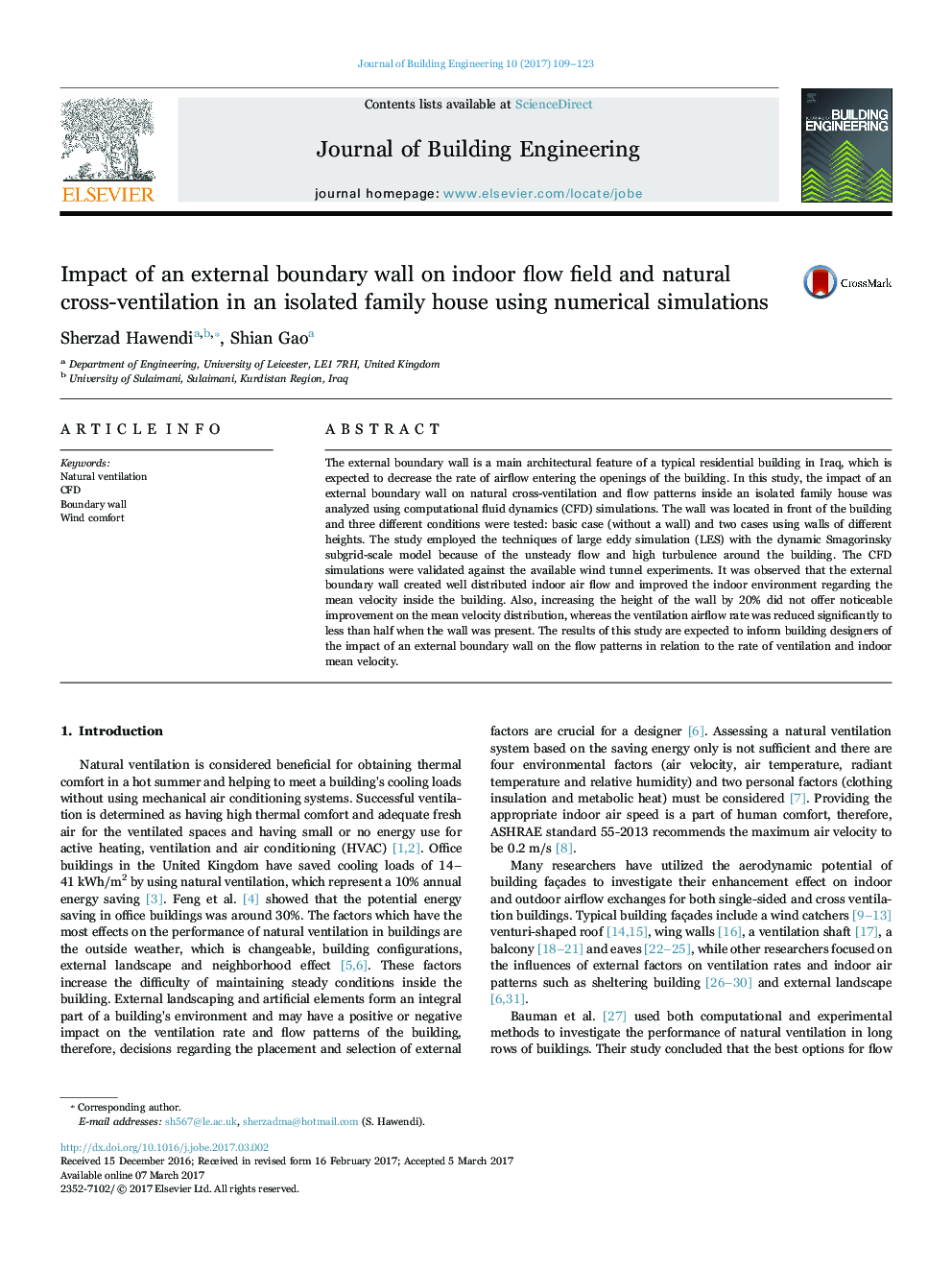| Article ID | Journal | Published Year | Pages | File Type |
|---|---|---|---|---|
| 4923098 | Journal of Building Engineering | 2017 | 15 Pages |
Abstract
The external boundary wall is a main architectural feature of a typical residential building in Iraq, which is expected to decrease the rate of airflow entering the openings of the building. In this study, the impact of an external boundary wall on natural cross-ventilation and flow patterns inside an isolated family house was analyzed using computational fluid dynamics (CFD) simulations. The wall was located in front of the building and three different conditions were tested: basic case (without a wall) and two cases using walls of different heights. The study employed the techniques of large eddy simulation (LES) with the dynamic Smagorinsky subgrid-scale model because of the unsteady flow and high turbulence around the building. The CFD simulations were validated against the available wind tunnel experiments. It was observed that the external boundary wall created well distributed indoor air flow and improved the indoor environment regarding the mean velocity inside the building. Also, increasing the height of the wall by 20% did not offer noticeable improvement on the mean velocity distribution, whereas the ventilation airflow rate was reduced significantly to less than half when the wall was present. The results of this study are expected to inform building designers of the impact of an external boundary wall on the flow patterns in relation to the rate of ventilation and indoor mean velocity.
Keywords
Related Topics
Physical Sciences and Engineering
Engineering
Civil and Structural Engineering
Authors
Sherzad Hawendi, Shian Gao,
